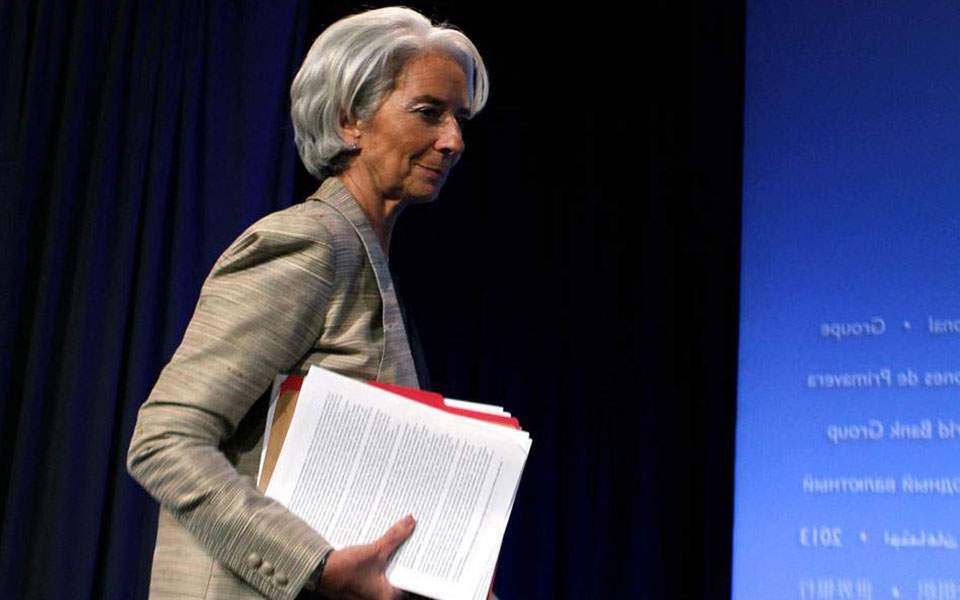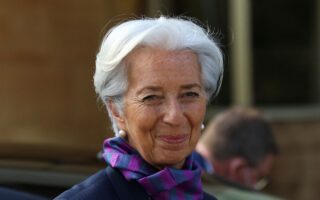ECB may choose a soft but decisive program

As the first rate hikes in the eurozone in 11 years approach, the European Central Bank is deploying its first line of “defense”, the flexible reinvestment of the PEPP program which was activated on July 1, putting more weight on supporting the bonds of the South, partly via “financing” from the bonds of the North. However, it remains clear that a more reliable tool is needed for the ECB to prevent fragmentation and a new “strength and tolerance test” by the markets.
As HSBC Director and Senior European Economist Fabio Balboni tells Kathimerini, “having an anti-fragmentation tool in place is a key pre-condition for the ECB to able to increase rates, as the lack of a liquidity backstop in the eurozone and divergence of fiscal fundamentals among eurozone countries leave some countries exposed to the risk of borrowing costs rising to unsustainable levels.”
“To that respect, having such a tool in place is in the interest not only of the doves within the ECB Governing Council, but also the hawks, which are hoping to be able to hike rates fast to curb inflation,” Balboni explains.
ECB head Christine Lagarde will present this new mechanism on July 21. She has received many proposals on its form, but in no case has there been an agreement.
“A novel instrument should be, first and foremost, specifically and clearly targeted to restoring spread levels in line with country fiscal fundamentals and implemented in a flexible fashion during circumstances in which spread levels reach overly high levels or spreads increase overly rapidly, Scope Ratings Director Dennis Shen, Director, and associate analyst in sovereign ratings, Alessandra Poli, tell Kathimerini.
“Such an anti-fragmentation tool could maintain flexibility of the PEPP, accompanied with moderate conditionality, which guarantees smooth implementation, whilst reducing at the same time risk of raising legal contentions with court systems such as with the German Constitutional Court,” they add.
Currently, this is the biggest issue and the biggest disagreement among the members of the ECB Governing Council: the conditionality that will be required of the member states to benefit from the bond purchase under the new instrument.
“While there is certainly a risk northern hawks demand more onerous reform conditionality, Eurasia Group expects the instrument to ultimately come with lighter strings attached,” as Mujtaba Rahman, Managing Director, Europe at the Eurasia Group said in a note to investors.
“Otherwise, there would be no need for a new instrument; member states would instead be directed to use the pre-existing Outright Monetary Transactions. Indeed, officials in Frankfurt argue a new instrument is being designed precisely because the OMT’s reform conditions were too politically unpalatable. But with elections approaching in Greece and Italy, the OMT (or a similar instrument) will prove too toxic to use. There is also an acute awareness across GC members that the ECB’s credibility hangs on the announcement of an instrument that assuages, and does not exacerbate, investor concerns,” according to Rahman.
With general elections looming in both Greece and Italy, the ECB will opt for a program more likely linked, for example, to the compliance of countries with the conditions of the Recovery Fund, the general recommendations of the European Commission for specific countries or with the assessment by the ECB itself of debt sustainability, as it did with Greece a few years ago.
There is also a strong awareness among all Council members that the credibility of the ECB depends on announcing an instrument that allays and does not exacerbate investor concerns.
HSBC’s Balboni says that “to get the green light from the Governing Council, and avoid the risk of a legal challenge, there will have to be some strings attached to it. In our view, some ‘eligibility’ criteria defined ex ante (for instance a country being on track with the RRP implementation or not under the EU Excessive Deficit Procedure) would be more effective than conditions which have to be agreed ex post (similar to the OMTs). They would reduce the uncertainty in the markets on whether it will actually be used (even though, it could also mean that a country is no longer eligible once those criteria are not met, but this should not be the case at least at the beginning).
According to Rahman, Eurasia Group’s expectation on reform conditionality “is that the ECB will end up somewhere in the middle of the two extremes that have characterized ECB interventions of this type in the past. To control widening spreads at the beginning of the Greek financial crisis in 2010, the ECB announced the Securities Market Program (SMP). This enabled the ECB to hoover up primarily Italian but also southern European debt without any formal reform conditionality. But the program was rendered ineffective by its limited size and ECB seniority. At the other end of the spectrum, as above, was the ECB’S 2012 OMT instrument, which required an ESM program for countries to qualify for ECB support.”
He added that “between these two extremes, the bank is likely to converge on countries’ pre-existing reform plans, for example, those articulated in member states’ recovery and resilience plans (RRPs) that underpin their Recovery Fund (RF) disbursements. If countries are on track for a RF disbursement, they would be granted automatic and unconditional ECB bond buying support. This would have two advantages—first, reinforcing the EU’s landmark RF and the growth enhancing reforms it promotes; second, avoid imposing new conditionality on southern European countries that would prove unacceptable to those governments and exacerbate the fragmentation risks the ECB is trying to control.
Another possibility—which would be a bigger problem—could be to make ECB support contingent on countries signing up to a diluted form of ESM credit line (a so-called Precautionary Credit line). This would involve much lighter fiscal and policy conditionality. Still, ESM involvement in any form would be very difficult to sell politically in the South.”
He went on to offer another route, that “would be for part of the conditionality the ECB unveils to link to member states’ fiscal consolidation path articulated in the EU’s fiscal framework—the Stability and Growth Pact. However, those rules are currently suspended, and are themselves changing.”





